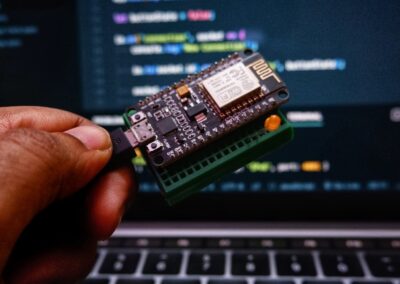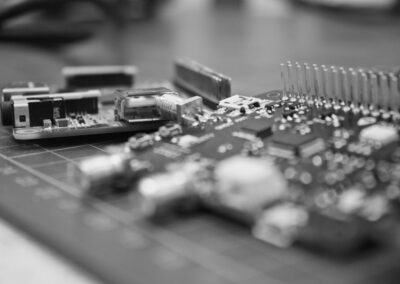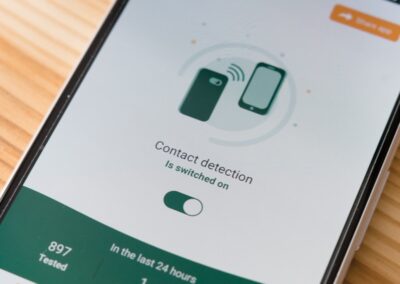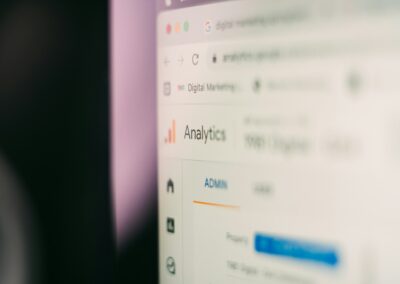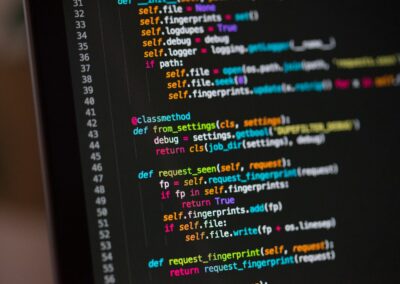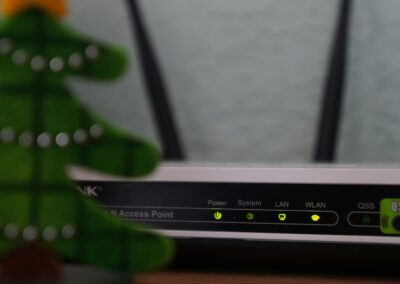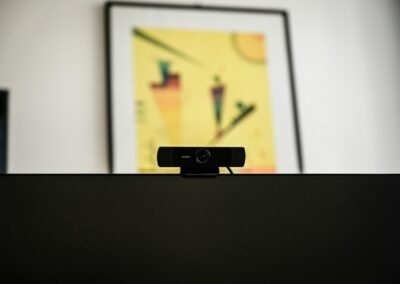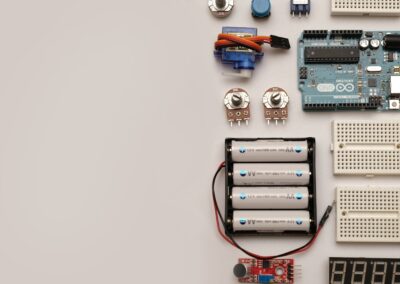Building Confidence in IoT Devices and Services
The Importance of Enhancing Trust in IoT Through Data Protection
In today’s interconnected world, enhancing trust in IoT through data protection is critical for organizations aiming to leverage the full potential of the Internet of Things (IoT). IoT devices, which range from smart home appliances to industrial sensors, collect and transmit vast amounts of data, making them integral to modern business operations. However, the proliferation of IoT devices also brings significant security challenges. Ensuring robust data protection measures is essential for maintaining trust and confidence in these devices and services.
In regions like Saudi Arabia and the UAE, where technological innovation is a key driver of economic growth, the importance of IoT security cannot be overstated. Saudi Arabia’s Vision 2030 and the UAE’s National Innovation Strategy both emphasize the adoption of advanced technologies, including IoT, to enhance efficiency and drive development. To achieve these goals, organizations in Riyadh, Dubai, and beyond must prioritize data protection to safeguard sensitive information and build trust with users.
Implementing effective data protection measures involves securing IoT devices against cyber threats, ensuring data integrity, and maintaining user privacy. By adopting comprehensive data security strategies, organizations can enhance trust in IoT devices and services, fostering a secure and reliable digital environment.
Implementing Robust IoT Security Measures
One of the most effective ways to enhance trust in IoT is by implementing robust security measures. These measures should protect IoT devices and the data they collect from unauthorized access and cyber threats. In regions like Saudi Arabia and the UAE, where IoT adoption is accelerating, implementing IoT security is a critical component of digital transformation.
Key strategies for IoT security include using strong encryption methods to protect data in transit and at rest. Encryption ensures that even if data is intercepted, it remains unreadable to unauthorized parties. Additionally, organizations should implement secure authentication mechanisms, such as multi-factor authentication (MFA), to verify the identity of users accessing IoT devices and services. MFA adds an extra layer of security by requiring users to provide multiple forms of verification before gaining access.
Another important aspect of IoT security is regular software updates and patch management. IoT devices often run on firmware that can have vulnerabilities. Ensuring that devices receive timely updates and patches can prevent these vulnerabilities from being exploited by cybercriminals. By adopting these security measures, organizations can enhance the protection of IoT devices and the data they handle.
Leveraging Executive Coaching for IoT Security Leadership
Executive coaching can play a vital role in promoting IoT security awareness and best practices at the leadership level. Business leaders in Riyadh and Dubai must be equipped with the knowledge and skills to drive IoT security initiatives and foster a culture of security within their organizations. Executive coaching provides the necessary guidance and support to help leaders develop and implement effective IoT security strategies.
Coaching programs can help executives understand the technical and regulatory aspects of IoT security, as well as the potential benefits and risks associated with IoT adoption. By staying informed about emerging trends and best practices in IoT security, leaders can develop comprehensive strategies that prioritize data protection and user trust.
Furthermore, executive coaching can assist leaders in creating a culture of IoT security awareness within their organizations. This involves promoting IoT security best practices among employees and encouraging proactive measures to protect IoT devices and data. By fostering a culture of security, organizations can enhance their overall security posture and reduce the risk of IoT-related data breaches.
Engaging Stakeholders in IoT Data Protection
Creating Awareness Campaigns for Stakeholders
Engaging stakeholders in IoT data protection is essential for ensuring comprehensive and secure IoT implementations. Organizations must communicate the importance of IoT security to their stakeholders, including customers, partners, and suppliers. Awareness campaigns can be an effective way to educate stakeholders about the risks associated with IoT devices and the measures they can take to protect themselves.
These campaigns should include clear and concise information about IoT security, highlighting the potential consequences of data breaches and the steps stakeholders can take to enhance security. This can include creating informative brochures, hosting webinars, and distributing educational materials through various channels. By raising awareness among stakeholders, organizations can foster a collaborative approach to IoT security.
In regions like Saudi Arabia and the UAE, where IoT devices are becoming increasingly integrated into daily life and business operations, engaging stakeholders in IoT security initiatives is crucial. Organizations should work closely with their stakeholders to ensure that they understand the importance of IoT data protection and are equipped with the tools and knowledge to enhance security.
Utilizing Modern Technology for IoT Data Protection
Modern technology offers several solutions that can enhance IoT data protection and promote awareness. In regions like Riyadh and Dubai, where technological innovation is a priority, leveraging these technologies can help organizations stay ahead of emerging threats and maintain a secure digital environment.
One such technology is blockchain, which offers a secure and transparent way to manage data used by IoT devices. Blockchain can provide a decentralized platform for storing and tracking IoT data, ensuring that the data is free from tampering and can be audited for integrity. By adopting blockchain-based solutions, organizations can enhance IoT data security and build trust with their stakeholders.
Artificial Intelligence (AI) and machine learning can also be used to monitor IoT devices and detect suspicious behavior. These technologies can analyze patterns in IoT data and identify potential security breaches, allowing organizations to take proactive measures to protect their devices and data. By leveraging AI and machine learning, organizations can enhance their ability to detect and respond to IoT security threats.
Future Trends in IoT Data Protection
As IoT data protection continues to evolve, organizations must stay informed about emerging trends and technologies that can enhance their security strategies. In Saudi Arabia and the UAE, where IoT adoption is rapidly advancing, adopting these trends will be essential for maintaining secure and reliable IoT devices and services.
One emerging trend is the increasing use of edge computing, which processes data closer to where it is generated rather than relying on centralized data centers. Edge computing can enhance IoT data security by reducing the amount of data that needs to be transmitted over networks, thereby minimizing the risk of interception and tampering. By adopting edge computing solutions, organizations can enhance IoT data protection and improve the performance of their IoT devices.
Another trend is the development of IoT security standards and frameworks by international organizations and industry consortia. These standards provide guidelines for IoT security best practices, ensuring that IoT devices are developed and deployed responsibly. By adopting these standards, organizations in Riyadh and Dubai can enhance the security and reliability of their IoT devices and services.
Conclusion: Ensuring Trust and Confidence in IoT
Enhancing trust in IoT through data protection is essential for ensuring the success and reliability of IoT devices and services in today’s digital age. By implementing robust IoT security measures, leveraging executive coaching, and engaging stakeholders in IoT data protection initiatives, organizations in Saudi Arabia and the UAE can ensure that their IoT devices and services are secure, reliable, and trustworthy.
Modern technology plays a vital role in enhancing IoT data protection, offering innovative solutions such as blockchain and edge computing. As IoT data protection continues to evolve, staying informed about emerging trends and adopting proactive measures will be crucial for maintaining a secure and reliable digital environment. By prioritizing IoT data protection, organizations can achieve long-term success and build trust with their users in the digital age.
—
#IoTDataProtection, #TrustInIoT, #DataSecurityInIoT, #IoTDeviceSecurity, #CybersecurityInIoT, #SaudiArabiaIoT, #UAEDataprotection, #RiyadhIoTSecurity, #DubaiIoTTechnology, #ExecutiveCoachingInIoTSecurity





